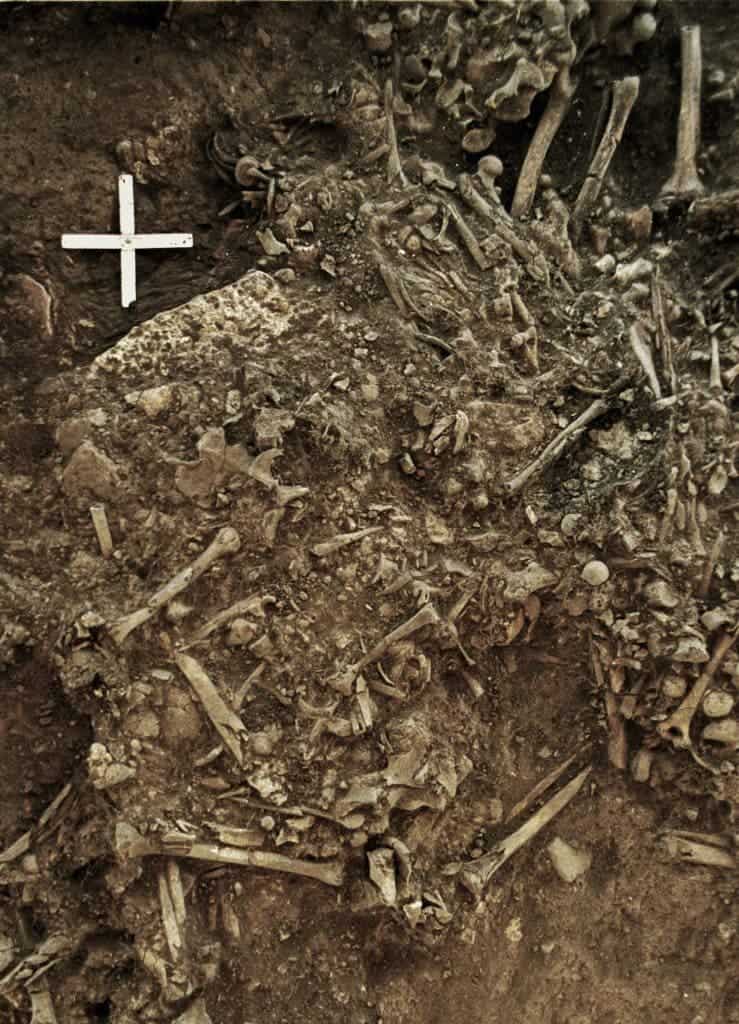
The black plague is a deadly infectious disease that killed off more than a third of Europe’s population during the Middle Ages. However, Yersinia pestis — the bacteria responsible for the disease — has been infecting humans long before there was any historical record of it. Inside a Stone Age limestone tomb in Sweden, scientists found a previously unknown strain of the plague which is nearly 5,000 years old. It’s the earliest known infection of the plague, suggesting that the disease was one of the first major pandemics to wreak havoc among human populations.
“Plague is maybe one of the deadliest bacteria that has ever existed for humans. And if you think of the word ‘plague,’ it can mean this infection by Y. pestis, but because of the trauma plague has caused in our history, it’s also come to refer more generally to any epidemic. The kind of analyses we do here let us go back through time and look at how this pathogen that’s had such a huge effect on us evolved,” says senior author Simon Rasmussen, a metagenomics researcher at the Technical University of Denmark and the University of Copenhagen.
The site at Frälsegården, Sweden, features 78 buried individuals, all of whom died within a 200-year period. The fact that so many people died in a relatively short period hinted that an outbreak may have been responsible for their ultimate downfall.
Nicolás Rascovan, a biologist at Aix-Marseille University in Marseille, France, thinks that the likely culprit is the black plague. Rascovan and colleagues discovered an ancient strain of Yersinia pestis in the remains of a 20-year-old woman, who died 4,900 years ago. Subsequent genome sequencing revealed that the strain carries a mutation that can trigger pneumonic plague, the deadliest form of the plague. Most historical cases of the disease are due to bubonic plague, which occurs when plague bacteria spread to the lymph nodes and cause inflammation.
Previously, the oldest plague bacterium was found in individuals in a double burial in the Samara region of Russia, who both had the same strain of the bacterium at the time of death, 3,800 years ago.
Around the period the women found at the Swedish site died, Neolithic cultures throughout Europe were experiencing a steep decline. One of the leading theories explaining the spread of the black plague suggests that the disease was brought to Europe during the many multi-wave migrations of humans from the Eurasian steps, which started about 5,000 years ago. The diseases which these migratory people brought with them caused massive havoc among European Neolithic farmers, who were replaced by the newcomers — or so the theory goes.
However, genome sequencing shows that the newly found strain diverged from other strains about 5,700 years ago. The woman’s genome isn’t related to that of ancient steppe people either. This means that the strain likely evolved before the Eurasian migration, there in Europe. Between 6,500 and 5,500 years ago, some southeastern European populations started living in so-called ‘mega-settlements’, which could number up to 20,000 people — a huge population for that time. These settlements had people and animals living very close to each other, as well as food stores that attracted all sorts of pests. This is the perfect breeding grounds for deadly pathogens to evolve, the authors note, a fact that seems to be supported by evidence of settlement abandonment after 5,500 years ago.
“We think our data fit. If plague evolved in the mega-settlements, then when people started dying from it, the settlements would have been abandoned and destroyed. This is exactly what was observed in these settlements after 5,500 years ago. Plague would also have started migrating along all the trade routes made possible by wheeled transport, which had rapidly expanded throughout Europe in this period,” Rasmussen says.
What’s remarkable is that the plague seems to have made its way into relatively small and isolated settlements, as far north as Sweden. Indirectly, this seems to suggest that even at that time, there must have been intricate and well-developed trade networks which, along with other wares, also carried pestilent diseases.
There are some problems with the researchers’ plague-origin theory, however. The most obvious is that no plague strains have been found yet at any of the mega-settlements where the bacterium is supposed to have evolved. More excavations might eventually uncover black plague at such sites but even so, the findings could help unravel the complicated picture of how deadly pathogens evolved and spread among these ancient human settlements.
“We often think that these superpathogens have always been around, but that’s not the case,” he says. “Plague evolved from an organism that was relatively harmless. More recently, the same thing happened with smallpox, malaria, Ebola, and Zika. This process is very dynamic–and it keeps happening. I think it’s really interesting to try to understand how we go from something harmless to something extremely virulent.”
The findings were reported in the journal Cell.


